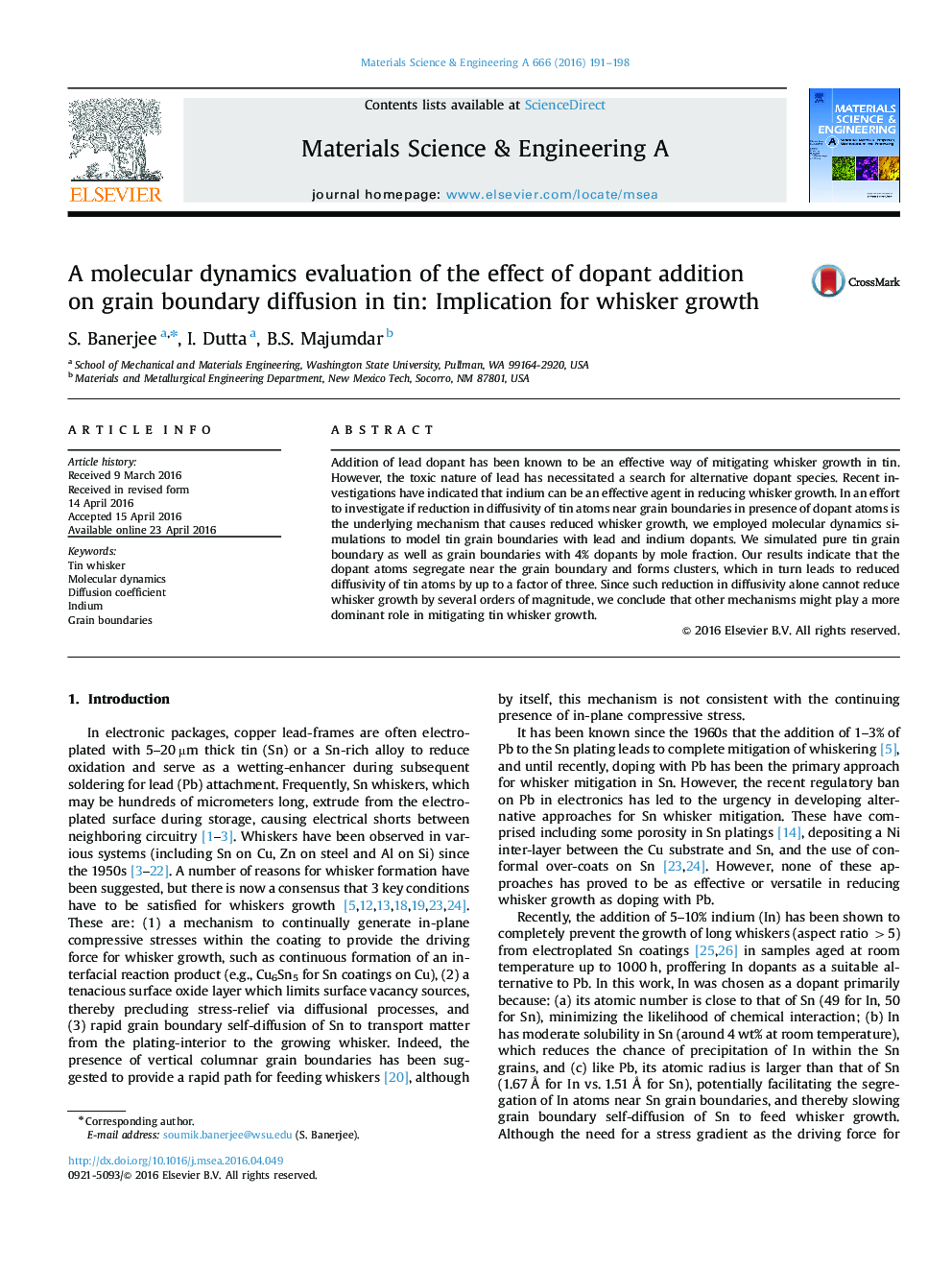| Article ID | Journal | Published Year | Pages | File Type |
|---|---|---|---|---|
| 7975420 | Materials Science and Engineering: A | 2016 | 8 Pages |
Abstract
Addition of lead dopant has been known to be an effective way of mitigating whisker growth in tin. However, the toxic nature of lead has necessitated a search for alternative dopant species. Recent investigations have indicated that indium can be an effective agent in reducing whisker growth. In an effort to investigate if reduction in diffusivity of tin atoms near grain boundaries in presence of dopant atoms is the underlying mechanism that causes reduced whisker growth, we employed molecular dynamics simulations to model tin grain boundaries with lead and indium dopants. We simulated pure tin grain boundary as well as grain boundaries with 4% dopants by mole fraction. Our results indicate that the dopant atoms segregate near the grain boundary and forms clusters, which in turn leads to reduced diffusivity of tin atoms by up to a factor of three. Since such reduction in diffusivity alone cannot reduce whisker growth by several orders of magnitude, we conclude that other mechanisms might play a more dominant role in mitigating tin whisker growth.
Related Topics
Physical Sciences and Engineering
Materials Science
Materials Science (General)
Authors
S. Banerjee, I. Dutta, B.S. Majumdar,
